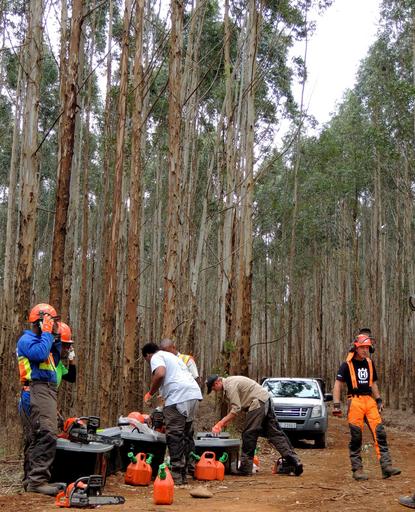Deliberating Before Tree Lopping: Key Considerations for Informed Decisions

The decision to engage in tree lopping, a practice involving the selective removal of tree branches or limbs, is not one to be taken lightly. While tree lopping can serve specific purposes, such as clearance or safety, it requires thoughtful contemplation and a thorough understanding of its potential consequences. Before embarking on this endeavour, there are essential considerations that every property owner should take into account. In this article, we explore these considerations to guide you in making informed and responsible choices when it comes to tree lopping.
Central to any decision involving tree care is the health and well-being of the tree itself. Assess the tree’s overall vitality, including its foliage, growth patterns, and structural integrity. Trees that are already compromised due to disease, pest infestations, or structural issues may be more susceptible to stress and damage from lopping. Prioritize the preservation of healthy trees and consult with a certified arborist to determine if lopping is the appropriate course of action.Clearly defining the purpose of lopping trees is essential. Are you seeking to enhance the tree’s aesthetics, improve clearance, or mitigate safety risks? Different objectives may necessitate varying levels of lopping. Structural pruning, which involves targeted branch removal, maybe a more suitable approach to achieving certain goals while preserving the tree’s health and appearance.

Before resorting to tree lopping, explore alternative tree management techniques. Crown thinning, crown reduction, and selective pruning are practices that can address specific concerns without the need for extensive lopping. These techniques maintain the tree’s natural form and minimize the risk of over-pruning.
The timing of tree lopping plays a significant role in its success and impact on the tree’s health. Lopping during the tree’s dormant period, typically late winter to early spring or late summer to early fall, is generally advisable. Lopping during dormancy reduces stress and allows the tree to recover more effectively. Avoid lopping during extreme weather conditions, as adverse weather can exacerbate the tree’s stress.Before proceeding with tree lopping, research and adhere to local regulations, permits, and guidelines governing tree care. Some areas have specific restrictions on tree lopping to protect the environment and maintain urban forests. Familiarize yourself with these regulations to ensure that your actions comply with the law.

Engaging the expertise of a certified arborist is crucial before making any decisions about tree lopping. Arborists possess the knowledge and experience to assess a tree’s health, structural integrity, and specific needs. They can provide tailored recommendations based on the unique characteristics of your tree and property.Consider the long-term implications of tree lopping. While it may provide immediate benefits, lopping can have lasting effects on a tree’s health and structural stability. Improper lopping can lead to weak regrowth, increased susceptibility to diseases, and reduced lifespan. Balance short-term goals with the tree’s long-term well-being.
Different tree species exhibit varying responses to lopping. Some trees are more resilient and capable of regenerating from lopping, while others may suffer irreversible damage. Research the specific characteristics of your tree species and consult with an arborist to understand how lopping may affect it.
You Might Also Like
If you want to find your skiing paradise, let yourself feel the warmth of sun and sip of great food atmosphere in Chalet Sonnenhof in Perisher Resort.
You are welcome in Chalet Sonnenhof which lies at the very core of Perisher Resort,by heart ok- and passionate about...








